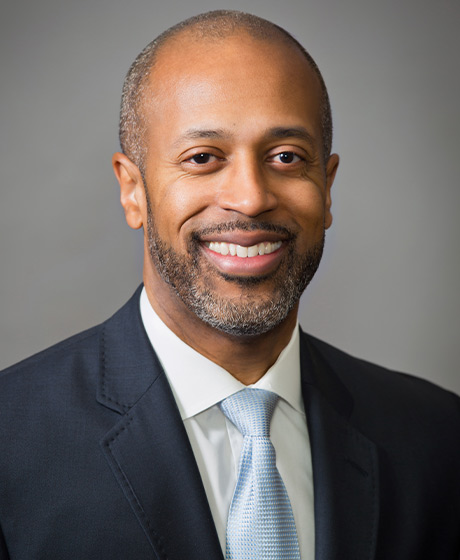
CEO’s note
n the first episode of the legendary television series “Game of Thrones,” Ned Stark, Lord of Winterfell, declares to his wife that, “Winter is coming.” In the world of the show, seasons last for years without anyone knowing when they’ll change. At the time Ned utters his pronouncement, Westeros hasn’t seen winter in more than a decade.
Ten years of summertime has allowed complacency to set in, so the warning of winter’s approach is especially ominous. Yet, unbeknownst to Ned, this particular winter will bring not only cold, but also supernatural forces that threaten the well-being of the kingdom.
Now, what does all this have to do with public schools? Simple. We are the citizens of Westeros in this analogy and while we’re basking in the gentle light of spring, rest assured — winter is coming. The financial cold front bearing down on public education is unlike any we’ve seen in a decade. It may not be obvious to the public, to the Legislature or to school staff. Even some of our newer board members or superintendents may fail to recognize it, but those who have been here before can sense a chill in the air. And if we fail to diligently prepare for the harsh change of seasons, the results will be catastrophic for public schools and the students we serve.
One difference between California and Westeros is that no supernatural entities are plotting against us. Yet, like in Westeros, we have experienced an extended summer marked by rising funding for TK-12 public schools. This year will likely be the first to break that streak and the coming winter — and those that may follow — present an existential threat to public education. If state tax revenues continue to plunge, along with the Proposition 98 guarantee, our ability to provide the instruction, services and support students need will diminish at a time when it’s never been more critical.
Those who recall the last time winter was weathered by public schools are traumatized by the memory. From 2008 to 2013, education funding fell by $20 billion. Immediately before the fiscal crisis hit, California ranked 29th out of 50 states and the District of Columbia in unadjusted per-pupil expenditures, allocating about 7.5 percent less than the national average. Using data from the National Center for Education Statistics (NCES) that adjusts for regional cost differences, California ranked 46th in cost-adjusted expenditures per pupil, spending 16.6 percent less than the national average. By the 2009–10 school year, California had plummeted to 46th nationally in per-pupil funding on both absolute and cost-adjusted measures.

California’s deep reliance on income tax from ultra-high earners contributes to the boom-bust nature of our economy and ensures an unusual level of volatility in the state’s school funding. The pain, however, is not evenly shared. Deferred payments and budget cuts exact greater harm on districts with less property tax revenue to blunt the impact of declining funds from the state. In a similar vein, proportional cuts to the Local Control Funding Formula weigh more heavily on districts with large numbers of high-need students — the same students who suffered disproportionately during the pandemic.
Taking this all into account, we must take every precaution to avoid a repeat of what schools experienced during the Great Recession. The forces that drive the economy and shape tax revenue are beyond our control. But the priorities we establish, the energy we bring to our legislative advocacy, and the discipline we exercise when budgeting at the local level are not.
At the state level, CSBA has worked consistently over the past decade to improve the structure of our school funding system to provide a higher level of base funding, more local control, fewer categoricals and increased flexibility. While we don’t win every battle, if you compare where we are now to where we were before the advent of LCFF, you can see the impact of our advocacy. Additionally, we have also vigorously opposed unfunded mandates and pushed for relief from pension cuts and other spiraling costs that reduce the funds available for direct student services and inhibit the ability to build reserves for tough times.
That tradition continues in 2023 as CSBA’s budget advocacy has played a role in gubernatorial and legislative budget proposals that prioritize fully funding the 8.13 percent cost-of-living adjustment, protecting the funding gains of the last several years, and sustaining revenues for transformative programs such as transitional kindergarten, the Expanded Learning Opportunities Program, universal meals and home-to-school transportation.
We are also pushing back against the proposal to slash $1.2 billion from the Arts, Music & Instructional Materials Discretionary Block Grant, which many districts have already earmarked for incentives to recruit and retain staff, buy down pension obligations and health benefits, or purchase HVAC system replacements, school safety surveillance equipment and instructional materials.
Finally, CSBA is urging the Newsom Administration and the Legislature not to create any new categorical programs. With more limited funding available, it’s imperative that we stay focused to ensure successful implementation of large programs undertaken in recent years and maximize flexibility. We can’t let Sacramento tie the hands of local governance teams and prevent you from developing customized responses for the needs of your students, staff and communities.
As you prepare policies to address critical issues like academic recovery, expanded learning opportunities, mental health services, school safety and educator shortages, there are lessons to be learned from our last fiscal winter. A key finding is that districts with healthier reserve funds were better able to cushion the blow of reduced state funding and mitigate spending cuts. An encouraging sign is that district reserves are more equitably distributed and nearly twice as large today as before the last recession, due in part to CSBA’s successful effort to reform a reserve cap law that made it hard for districts to build the necessary reserves.
The moment when strong reserves transition from a precaution to a necessity is upon us. As the stormclouds gather, we can take a measure of satisfaction in the work we have done to prepare for this moment. But we can’t become complacent. At the local level, you must establish a clear process for using financial and student assessment data to evaluate and prioritize investments based on how they are meeting the goals of your local educational agency. LEAs should also implement a communications strategy to engage with stakeholders on difficult decisions. Here in Sacramento, we will continue to fight on your behalf and provide the tools you need for this difficult season. Yes, winter is coming — and the politics of Sacramento is its own “Game of Thrones.” But unlike the citizens of Westeros, we won’t be caught with our guard down.
